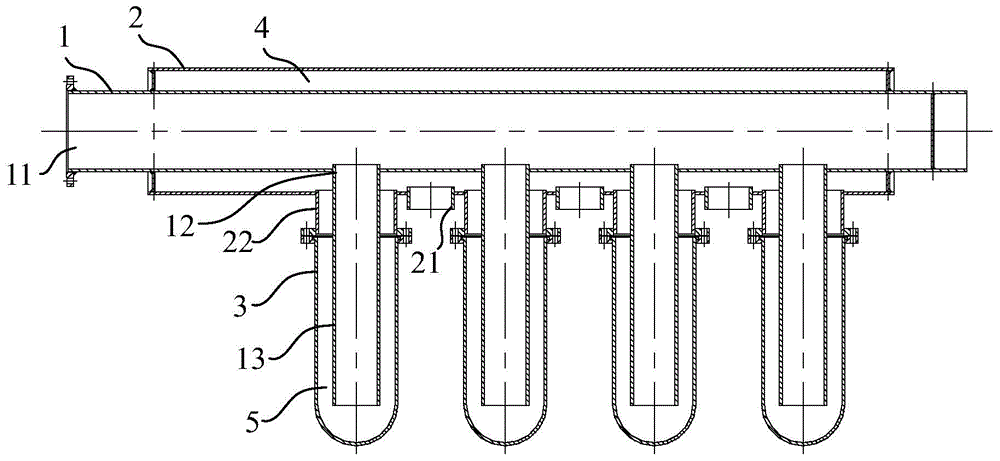Zinc pot heating radiant tube
A radiant tube, zinc pot technology, applied in hot dip plating process, metal material coating process, coating and other directions, can solve the problems of heat loss, large volatilization, low heating efficiency, etc., to improve temperature uniformity, enhance The effect of heating degree and improving heating efficiency
- Summary
- Abstract
- Description
- Claims
- Application Information
AI Technical Summary
Problems solved by technology
Method used
Image
Examples
Embodiment Construction
[0039] In order to have a clearer understanding of the technical features, purposes and effects of the present invention, the specific implementation manners of the present invention will now be described with reference to the accompanying drawings.
[0040] A kind of zinc pot heating radiant tube of the present invention, as figure 1 As shown, it includes: an inner tube 1, an outer tube 2 and at least one radiant tube 3. One end of the inner pipe 1 is an open end 11, and the other end is a closed end. The open end 11 can be connected with a gas burner; The outer tube 2 is sleeved on the inner tube 1, the two ends of the inner tube 1 extend to the outside of the outer tube 2, and both ends of the outer tube 2 are sealed with the side wall of the inner tube 1; at least one outer tube is provided on the side wall of the outer tube 2 Spout 21. One end of the radiant tube 3 is an open end, and the other end is a closed end; the open end of the radiant tube 3 communicates with th...
PUM
 Login to View More
Login to View More Abstract
Description
Claims
Application Information
 Login to View More
Login to View More - R&D
- Intellectual Property
- Life Sciences
- Materials
- Tech Scout
- Unparalleled Data Quality
- Higher Quality Content
- 60% Fewer Hallucinations
Browse by: Latest US Patents, China's latest patents, Technical Efficacy Thesaurus, Application Domain, Technology Topic, Popular Technical Reports.
© 2025 PatSnap. All rights reserved.Legal|Privacy policy|Modern Slavery Act Transparency Statement|Sitemap|About US| Contact US: help@patsnap.com


